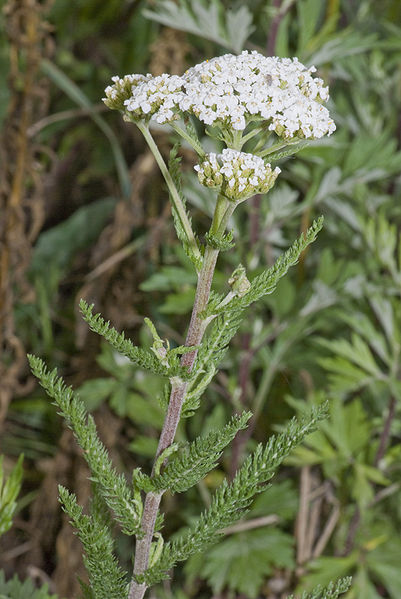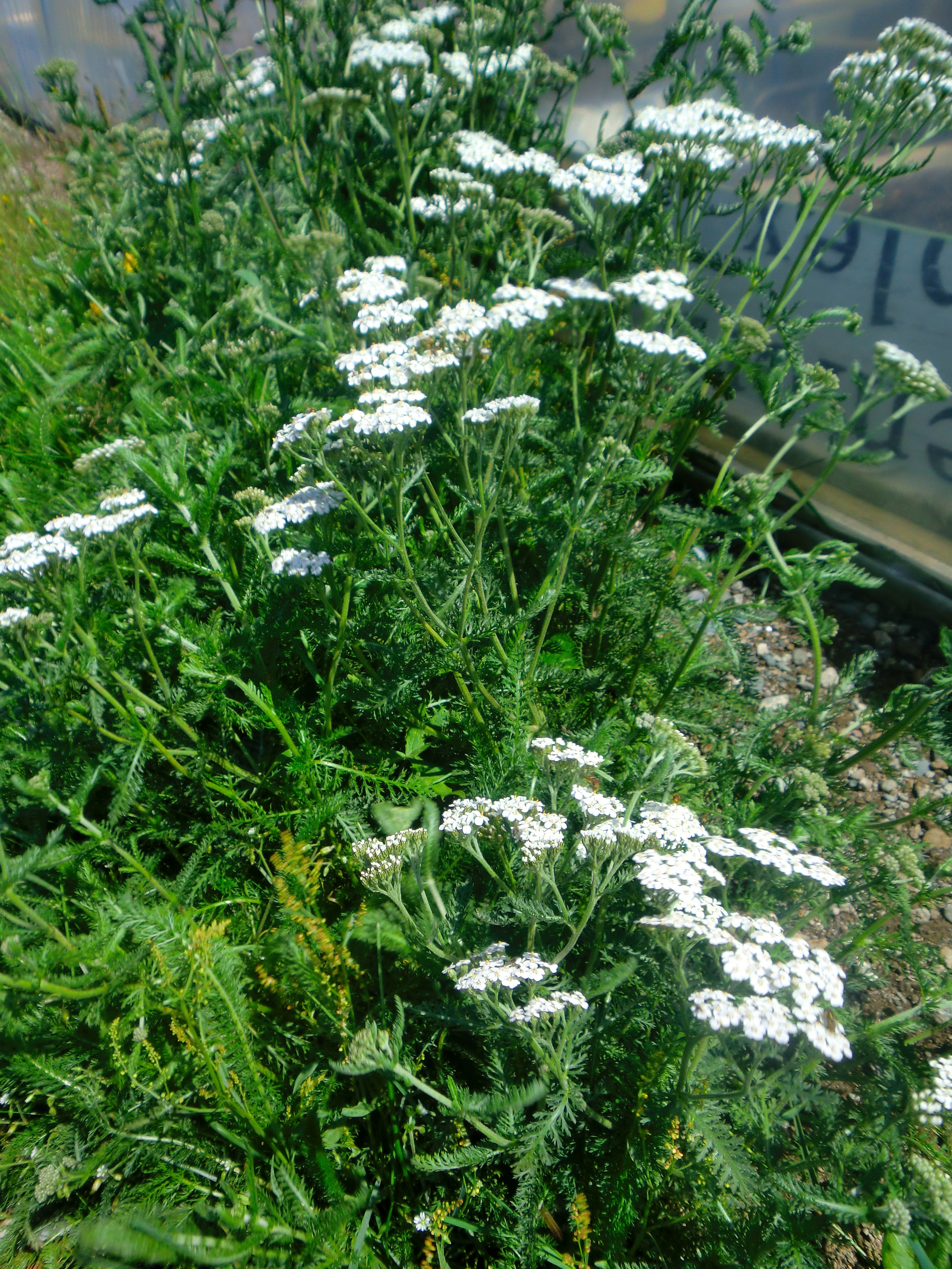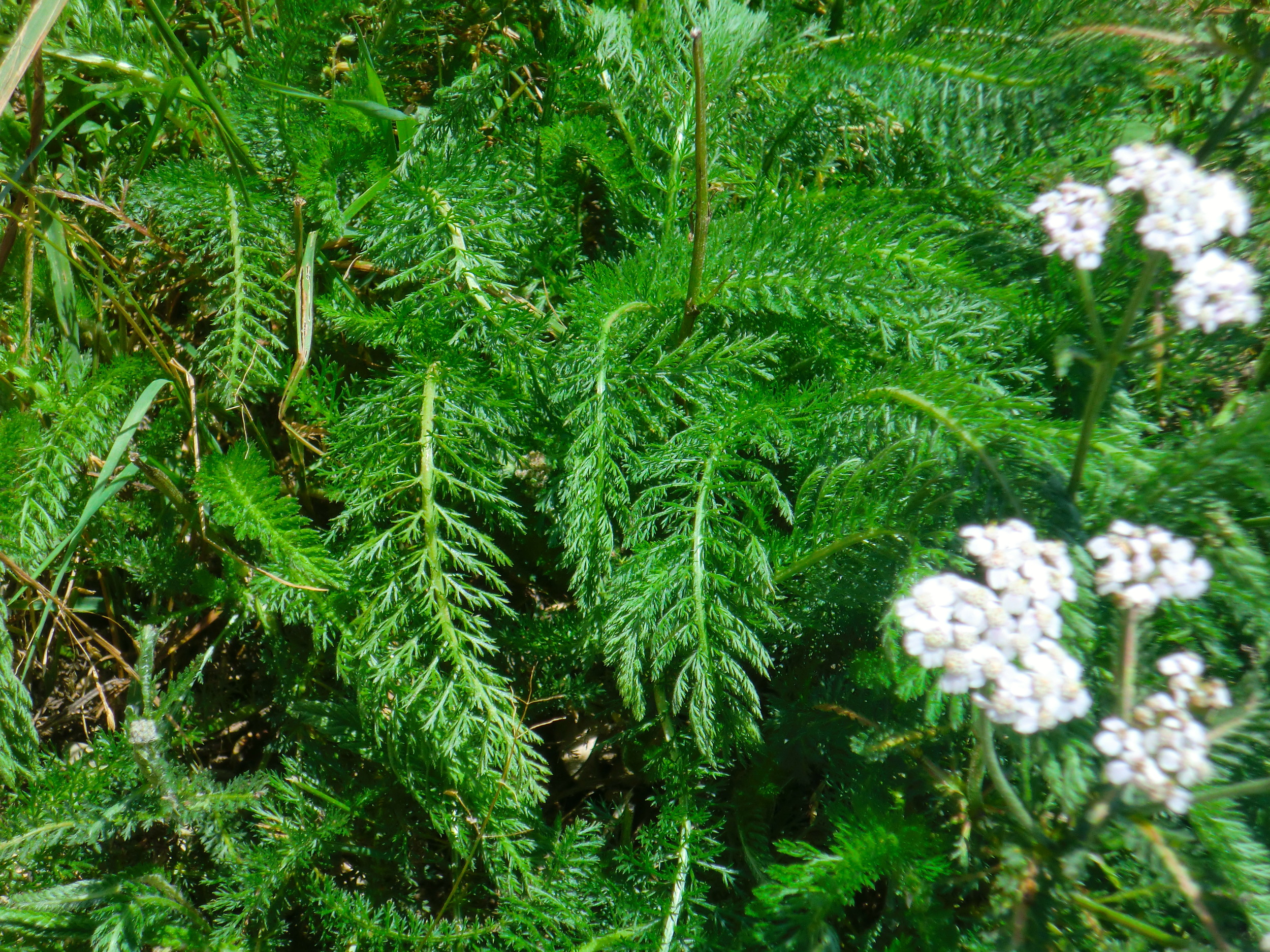Yarrow is my favourite wild edible. It's super easy to spot, abundant almost everywhere, and edible in a few ways. Plus it's really lovely, so hang bunches of it to dry in your kitchen. If you were a flower-picking child, chances are you've savagely pulled up a few yarrow in your day.

"Thanks to modern, high-tech archaeology, fossils of yarrow pollen have been identified in Neanderthal burial caves, suggesting that its association with the human race is some 60,000 years old. Yarrow is an old herb, regardless. The most authentic way of casting the I Ching, an ancient Chinese method of answering questions about the future, involves 50 dried yarrow stalks. And yarrow figured in the Trojan war some 3,000 years ago, when Achilles packed it on his comrades' wounds to stop the bleeding." (Rodale's Illustrated Encyclopedia of Herbs)
How cool is that history!?! Yarrow was touted as a very useful medicinal plant back in the day too. It was used to treat an array of concerns from nosebleeds to wounds to stomach upset to menstrual pains to colds and flues. It's one of the most common simples (plants used for medicinal purposes) that healers would keep in ready supply. "Over 100 biologically active compounds have been identified from the plant" (Foster & Duke, Eastern/Central Medicinal Plants)
Here's the down-low on yarrow:
What: Achillea millefolium from the Compositae family, also called milfoil, thousandleaf, little feather and soldier's woundwort. "A sturdy, ferny plant that grows in abundance in grassy places, sometimes flowering right up until Christmas" (Mabey, Food for Free)
- Round, smooth, pithy stem
- Alternate, delicate, feather-shaped leaves (edible)
- Clusters of tiny flowers. Wild yarrow has white to pale pink or purple flowers, but cultivated garden yarrow comes in lots of deeper hues. (edible)
Where: Any disturbed or grassy ground, especially where people are or have been. Grows in zones 2-8. Look for it near buildings and fence lines, along road sides, and in lawns and untended green spaces. Old graveyards are usually overrun with it. Yarrow is one of those plants that can grow out of the cracks in sidewalks and is tough as rocks, despite its pretty good looks.
 When: Look for the feathery greens starting in spring and then flowers from June- November continuously. I haven't found that the leaves or flowers are especially good at any one time, I just keep harvesting them all summer and fall. I imagine that like most greens the leaves become more bitter as they mature, but that's easily dealt with by eating them cooked to lessen bitterness.
When: Look for the feathery greens starting in spring and then flowers from June- November continuously. I haven't found that the leaves or flowers are especially good at any one time, I just keep harvesting them all summer and fall. I imagine that like most greens the leaves become more bitter as they mature, but that's easily dealt with by eating them cooked to lessen bitterness.
How to use it: The leaves are mildly bitter but light in texture and can be used as you would sprouts or baby salad greens, or also steamed or blanched like cooking greens. Be careful not to overcook them because they're fairly delicate. The flowers can be used fresh or dried made into a tea that has a unique, slightly sweet and earthy flavour. The tea is what is said to help with digestion, menstrual symptoms and colds/flues. I like to add a bit of honey and/or lemon to it. With lemon it works almost like Neo Citron when you're sick. It's also supposed to help with restful sleep and I sometimes drink the tea with a bit of warm almond milk before bed.
In the garden: Don't pull this one like a weed because yarrow will attract beneficial insects. It's also a common plant in butterfly gardens. Cultivated varieties come in richer colours than the wild, pale yarrow. They're especially nice in the garden because they bloom continuously for almost 6 months, starting early and going late.
Warnings: One drawback of yarrow is that prolonged and steady internal use of it can cause skin irritation or photo-sensitivity in some people, which means your skin is more sensitive to sun burn. As with all wild edibles, use them in very small amounts at first, listen to your body's reaction, and then carry on accordingly. Also wear sunscreen anyway, haha.
Want to learn more about edible wild plants? Check out our Edible Wild Plants Workshop and the series A Taste of the Wild Side on the blog.




